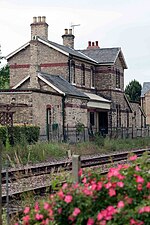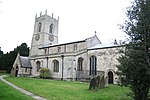Walkerith

Walkerith is a hamlet within the civil parish of East Stockwith, in the West Lindsey district of Lincolnshire, England. It lies on the east bank of the River Trent, 2.5 miles (4.0 km) north-west from Gainsborough and 1.5 miles (2.4 km) south from East Stockwith. The name 'Walkerith' derives from the Old English for 'landing place of a fuller'.Walkerith is recorded in the 1872 White's Directory as a small village and township in the Soke of Kirton, with a population of 80 in 252 acres (1 km2) of land. Trades listed included a boat builder, the licensed victualler of the Ferry Hotel, and four farmers.In 1885 Kelly's Directory recorded the village as a township within the ecclesiastical parish of East Stockwith, with its own ferry across the Trent, an area of 253 acres (1 km2), an 1881 population of 87, and a Wesleyan chapel built in 1834. Prior to 1866 Walkerwith was, for administrative purposes, a township, afterwards a civil parish.
Excerpt from the Wikipedia article Walkerith (License: CC BY-SA 3.0, Authors, Images).Walkerith
Stockwith Road, West Lindsey Walkerith CP
Geographical coordinates (GPS) Address Nearby Places Show on map
Geographical coordinates (GPS)
| Latitude | Longitude |
|---|---|
| N 53.427435 ° | E -0.816088 ° |
Address
Willow Tree Farm
Stockwith Road
DN21 3DF West Lindsey, Walkerith CP
England, United Kingdom
Open on Google Maps








